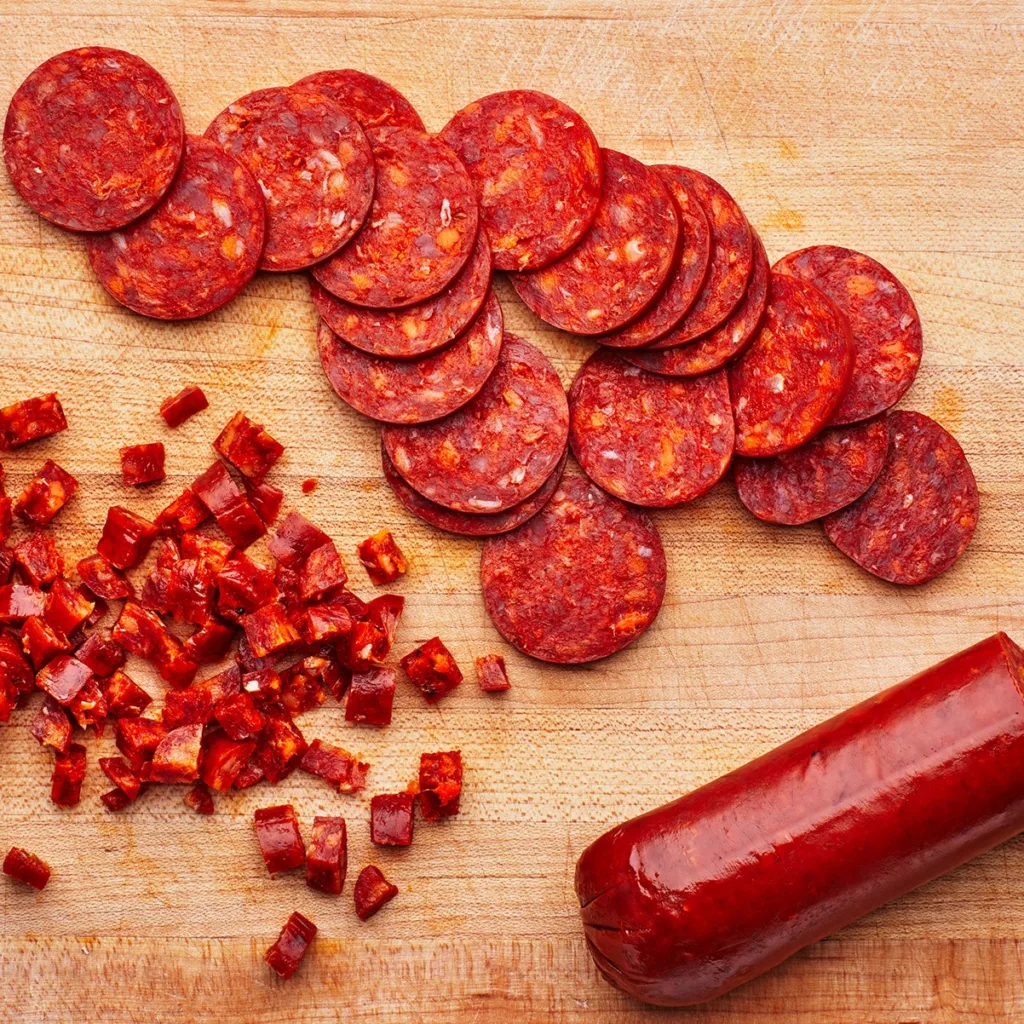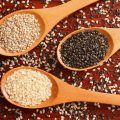Pepperoni is a popular topping for pizza, but it’s important to know its nutritional value. Pepperoni is high in calories and fat, with 141 calories per 1-ounce piece weighing 28 grams. In fact, 84% of the calories in pepperoni come from fat. This means that if you’re watching your calorie intake or trying to lose weight, you should be mindful of how much pepperoni you consume.
Pepperoni is also high in sodium, with 456 milligrams per 1-ounce serving. This is a concern because high sodium intake can lead to high blood pressure, which can increase your risk of heart disease and stroke. If you’re watching your sodium intake, it’s important to limit your consumption of pepperoni and other high-sodium foods.
Despite its high calorie and fat content, pepperoni is a good source of protein, with 7 grams per 1-ounce serving. Protein is important for building and repairing tissues in the body, and it can also help you feel full and satisfied after a meal. If you’re trying to increase your protein intake, adding pepperoni to your diet in moderation can be a good idea.
Pepperoni is also a source of vitamins and minerals. It’s rich in vitamins A, E, and D, which are important for maintaining healthy skin, immune function, and bone health. However, pepperoni is not a significant source of other vitamins and minerals, so it’s important to consume a variety of nutrient-rich foods to ensure you’re getting all the nutrients your body needs.
Pepperoni is a tasty but not particularly nutritious food. While it can be a good source of protein and certain vitamins, it’s high in calories, fat, and sodium. If you enjoy the taste of pepperoni, it’s fine to include it in your diet in moderation. However, if you’re trying to maintain a healthy diet, it’s best to limit your consumption of pepperoni and other high-calorie, high-fat foods.

Are Pepperonis Healthy?
Pepperoni slices are a popular topping for pizza and can add a lot of flavor to a slice. However, when it comes to their nutritional value, they are not the healthiest choice. Pepperoni is high in saturated fat and sodium, which can increase the risk of heart disease and high blood pressure. In addition, pepperoni is not a significant source of essential nutrients. While it does contain protein, it is not a good source of vitamins or minerals. Therefore, it is recommended to consume pepperoni in moderation to reduce the risk of negative health effects.
The Nutritional Content of Pepperoni
Pepperoni is a food product that contains both fat and protein. In fact, it is considered to be a high-fat food due to its high calorie content and fat percentage. A single 1-ounce piece of pepperoni, weighing about 28 grams or about five thin slices, contains 141 calories, of which 84 percent is fat. However, pepperoni also contains protein, with each 1-ounce serving providing about 6 grams of protein. Therefore, while pepperoni is high in fat, it also contains some protein. It is important to note that consuming pepperoni in moderation is recommended due to its high calorie and fat content.
The Carb Content of Pepperoni
Pepperoni is a type of cured meat that is commonly used as a pizza topping or snack. When it comes to carbs, pepperoni is relatively low in carbohydrates, making it a friendly option for those following a keto or low-carb diet. In a 3 oz serving of pepperoni, there is typically only 1 g of net carbs, which is a negligible amount. This makes pepperoni an ideal food choice for people looking to limit their carb intake while still enjoying flavorful and satisfying dishes. It’s important to note, however, that different brands of pepperoni may vary in their nutritional content, so it’s always a good idea to check the label before making a purchase. if you’re looking for a tasty, low-carb meat option, pepperoni is a great choice.
Comparing the Healthiness of Salami and Pepperoni
When it comes to health, both salami and pepperoni have negative impacts on the body. However, there are some differences between the two in terms of their nutritional values. Pepperoni is higher in calories and fat content than salami, which makes it less healthy. On the other hand, salami is richer in proteins, most B complex vitamins, and minerals than pepperoni.
Pepperoni is richer in vitamins A, E, and D than salami. These vitamins are essential for maintaining healthy skin, eyesight, and immune system. However, the high fat content in pepperoni can lead to weight gain and other health problems such as high cholesterol, heart diseases, and diabetes.
Salami, on the other hand, is a good source of protein which is essential for building and repairing tissues in the body. It is also richer in B complex vitamins such as thiamin, niacin, and riboflavin which are needed for energy production and maintaining healthy skin, eyes, and nervous system. Additionally, salami contains minerals such as iron, zinc, and selenium that are important for the immune system, blood production, and overall health.
While both salami and pepperoni have negative impacts on overall health, salami is a better option if consumed in moderation due to its higher protein content and richer nutritional profile.
Conclusion
Pepperoni is a flavorful meat that is popularly used as a topping for pizza. While it is a good source of protein, it is also high in saturated fat and sodium, and does not provide significant amounts of essential nutrients. However, for those following a ketogenic diet, pepperoni is a great option due to its low carb content. It is important to consume pepperoni in moderation and pair it with other healthy foods to ensure a balanced diet. while pepperoni may not be the healthiest meat option, it can sill be enjoyed in moderation as part of a balanced diet.












